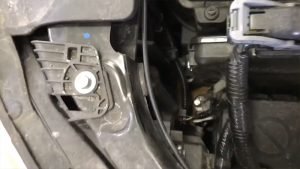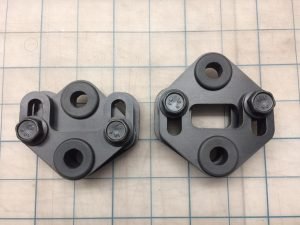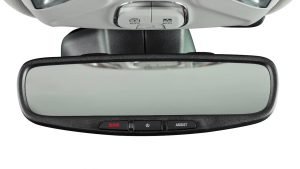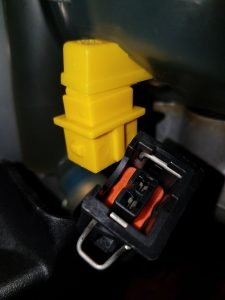
Contents
How to Fix Your Car’s Air Conditioning System: A Step-by-Step Guide
Is your car’s AC blowing hot air on a sweltering summer day? Don’t sweat it! While a complete AC system overhaul requires professional expertise, many common AC problems can be tackled with some DIY know-how and the right tools. This guide will walk you through troubleshooting and fixing some of the most frequent issues. Remember, safety first! Always consult your vehicle’s repair manual before starting any work.
🛒 Recommended Product
Before You Begin:
- Gather your tools: You’ll likely need a flashlight, a wrench set, screwdrivers, and potentially a refrigerant gauge set (depending on the issue). Never attempt to handle refrigerant without proper training and equipment. Refrigerant is under high pressure and can cause serious injury.
- Consult your vehicle’s repair manual: This invaluable resource provides specific diagrams and instructions for your car’s AC system.
- Safety glasses and gloves: Always wear appropriate safety equipment when working on your vehicle.
Step 1: Identifying the Problem
Before diving into repairs, determine the nature of the problem. Common issues include:
- No cold air at all: This points to a more significant problem, potentially involving refrigerant leaks, compressor failure, or electrical issues.
- Weak cold air: This could indicate low refrigerant, a clogged condenser, or a failing blower motor.
- Inconsistent cold air: This may be due to a faulty temperature control sensor or blend door actuator.
- Strange noises (hissing, clicking): These sounds could signal a leak, a failing compressor, or a problem with the compressor clutch.
Step 2: Check the Easy Stuff First
Before assuming major components are failing, check these simple things:
- The AC switch: Sounds obvious, but make sure the AC is actually turned on!
- The blower motor: Is the fan blowing air? A malfunctioning blower motor can prevent cold air from reaching the vents, even if the AC system is working. Check the fuse and the motor itself.
- Airflow obstructions: Check for any debris blocking air vents or the condenser (located at the front of your vehicle). Clean any obstructions carefully.
Step 3: Addressing Common Problems
🛒 Recommended Product
Once you’ve checked the basics, you can tackle some common issues:
- Low Refrigerant: Never attempt to recharge the refrigerant yourself unless you have the proper equipment and training. Refrigerant leaks require professional attention to identify and repair the leak before recharging. Improper handling can damage the system and cause injury.
- Clogged Condenser: A dirty condenser restricts airflow, reducing cooling efficiency. Carefully clean the condenser using a brush and compressed air, but avoid damaging the delicate fins.
- Faulty Blower Motor Resistor: This resistor controls fan speed. A bad resistor might result in only one fan speed working or no fan at all. Accessing and replacing it requires varying levels of mechanical ability, depending on the vehicle. Refer to your repair manual for specific instructions.
- Compressor Clutch Problems: The compressor clutch engages the compressor to cool the refrigerant. If it’s not engaging, you might hear a clicking sound. This is often an electrical issue and requires diagnostics to identify the faulty component (clutch relay, wiring, or the clutch itself).
Step 4: When to Call a Professional
Many AC system repairs, especially those involving refrigerant handling or compressor replacement, require specialized tools and knowledge. Don’t hesitate to call a qualified mechanic if:
- You’ve identified a refrigerant leak.
- The compressor is malfunctioning.
- You’re uncomfortable working with automotive electrical systems.
- You’re unable to identify the problem after troubleshooting.
Tips for Maintaining Your Car’s AC System:
- Regularly inspect the condenser: Keep it clean and free of debris.
- Schedule professional AC inspections: A yearly check-up can catch small problems before they escalate into major repairs.
- Use the AC regularly: Even in cooler months, running the AC for short periods can help lubricate the system and prevent seals from drying out.
Common Mistakes to Avoid:
- Attempting refrigerant repairs without proper training and equipment.
- Ignoring minor problems. Small issues can quickly become expensive repairs.
- Damaging the condenser fins during cleaning.
- Not consulting your repair manual.
By following these steps and exercising caution, you can address many common car AC problems. Remember that safety and proper procedures are paramount. When in doubt, always consult a qualified professional. Enjoy the cool air!
🛒 Recommended Product
FAQ
Q. My car AC is blowing only warm air. What’s the problem?
A. There are several possibilities. The most common are low refrigerant, a faulty compressor, a problem with the condenser, evaporator, or expansion valve, or a malfunctioning blower motor. You’ll likely need a professional AC technician to diagnose the specific issue and recharge the system or repair/replace faulty components. A simple check you can perform yourself is to feel the refrigerant lines. If one is cold and the other is warm or at ambient temperature, there’s a problem somewhere in the system.
Q. How much does it typically cost to fix a car AC system?
A. The cost varies greatly depending on the problem. A simple refrigerant recharge might cost between $100-$200, while a compressor replacement could run $500-$1500 or more, depending on the car make and model. A comprehensive diagnostic is usually the first step, and this itself can cost around $50-$100.
Q. Can I recharge my car’s AC system myself?
A. While you can buy refrigerant kits at auto parts stores, it’s generally not recommended for inexperienced individuals. Improperly handling refrigerant can be dangerous, and you might miss a more significant underlying issue that requires professional repair. Incorrect recharging can also damage the system further. It’s best to leave it to a qualified mechanic unless you have significant automotive experience.
Q. My car AC is blowing cold air but not very strong. What could be wrong?
A. Weak airflow often indicates a problem with the blower motor, its resistor, or the HVAC system’s air ducts. There might be debris blocking the air vents or a problem with the cabin air filter. Checking and cleaning or replacing the cabin air filter is a relatively easy DIY fix. If that doesn’t solve the problem, you’ll need professional help to investigate the blower motor and related components.
Q. The AC in my car smells bad. What should I do?
A. A bad smell usually points to mold or mildew buildup within the air conditioning system’s evaporator. This is common in humid climates or if the AC hasn’t been used for extended periods. Many mechanics offer AC system cleaning services, which involve using a specialized solution to disinfect and deodorize the system. Replacing the cabin air filter can also help reduce unpleasant odors. In severe cases, the evaporator itself may need replacement.
Q. My AC compressor keeps cycling on and off. Is that normal?
A. Short cycling (frequent on/off) isn’t normal and can indicate a variety of problems, including low refrigerant, a failing compressor clutch, a problem with the pressure switch, or electrical issues within the system. This requires professional diagnosis as it could lead to further damage if left unaddressed. Continued operation in this state puts excessive strain on the compressor.
Related Articles
How to Clean a Car Engine Bay
How to Clean Your Car Engine Bay: A Step-by-Step Guide A clean engine bay not only looks great but can also help detect potential problems early on. L…
How to Check Brake Pads in Your Car
How to Check Your Brake Pads: A Step-by-Step Guide Keeping your brakes in top condition is crucial for safety. Knowing how to check your brake pads yo…
How to Install Backup Sensors in Your Car
How to Install Backup Sensors in Your Car: A Step-by-Step Guide Adding backup sensors to your car is a fantastic way to enhance safety and peace of mi…
Affiliate Disclosure: As an Amazon Associate, I earn from qualifying purchases made through links on this site.








